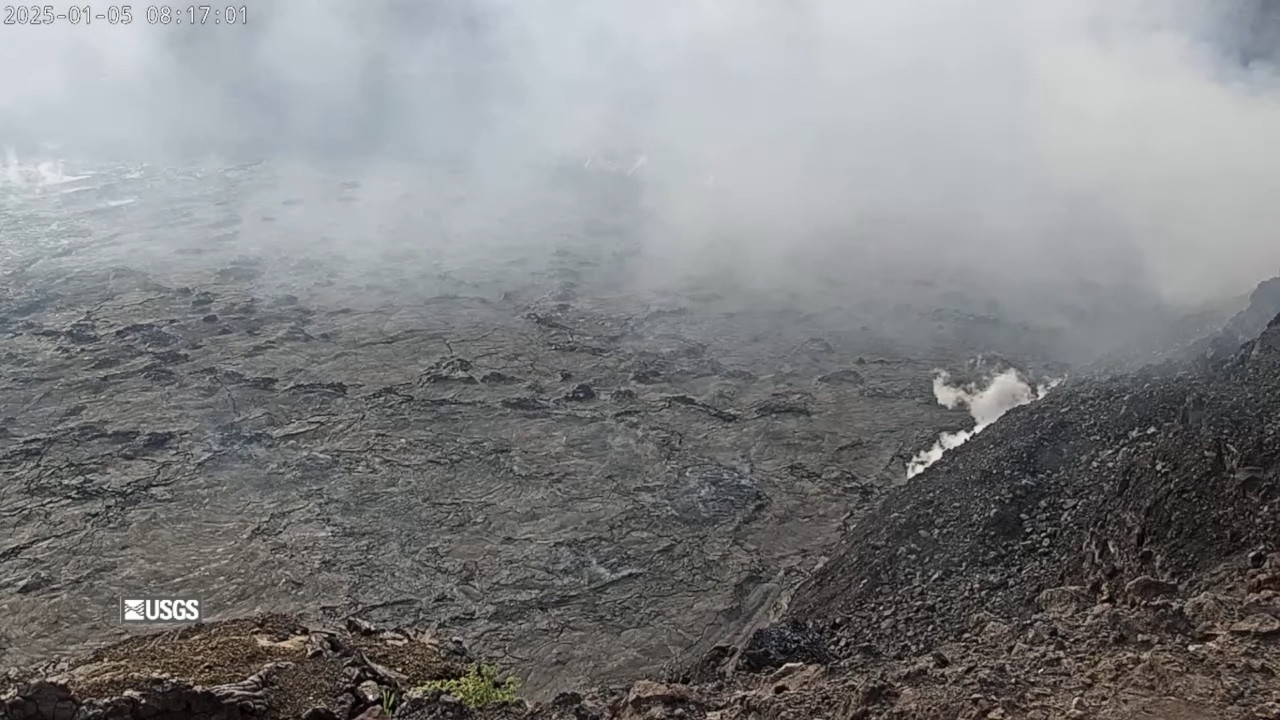(BIVN) – The eruption at the summit of Kīlauea remains paused, and the USGS Volcano Alert Level is at WATCH.
The summit eruption that began on Monday, December 23, was in its third episode when it paused at approximately 8:40 p.m. on Friday night, January 3.
Glow from the crater floor remained persistent overnight, the USGS Hawaiian Volcano Observatory reported, as breakouts and overturning crustal plates exposed molten lava. Scientists say this glow could persist for days.
No unusual activity has been noted along Kīlauea’s East Rift Zone or Southwest Rift Zone.
From the USGS HVO update published on Sunday morning:
Summit Instrumental Observations: Seismicity at the summit over the last 24 hours remains low with 5 small detected earthquakes. Seismic tremor decreased with the south vent at the summit shutting down and remains at background levels. Summit tiltmeters reversed from deflationary tilt to inflationary tilt around the same time that the lava fountain shut down. After decreasing by almost 25 microradians during the eruption, the summit tiltmeters have increased by 1.5 to 2 microradians since 8:40 pm on January 3. The last SO2 emission rate measured was ~30,000 tonnes per day on January 2 during fountaining. Emissions of SO2 remain elevated, but lower than those recorded during eruptive activity, and will be affected by wind conditions.
Summit Eruption Observations: Webcam images over the past 24 hour show diminished glow on the crater floor from residual lava after the lava fountain from the south vent shut down rapidly around 8:40 pm on January 3 (the north vent shut down at 2:16 pm on January 2). The area where the automatic laser rangefinder is pointing on the crater floor increased in elevation by nearly 50 ft (15 m) over the eruption, but has gradually fallen by approximately 13 ft (4 m) since the lava fountain shut down at 8:40 pm on January 3, with 3 ft (1 m) of that over the past 24 hours. There has been no visible flow of lava back into the vent after the pause, and the gradual drop in lava level is more likely due to loss of gas bubbles (summit lavas are 50% or more bubbles) or very slow leaking of lava into the vent beneath the crust.
Analysis: The current eruption at the summit of Kīlauea is the sixth eruption within the caldera since 2020. These eruptions in the summit region have lasted for about a week to more than a year in duration. This eruption, like most others, started with vigorous lava and volcanic gas emission, but has now paused for the third time. Episodes 2 and 3 of this eruption were preceded by re-inflation of the summit; the rapid change from deflation to inflation at the onset suggests that another eruptive episode may occur in the coming days to weeks if the summit magma chambers repressurize sufficiently. Summit eruptions observed over the past 60 years have exhibited vigorous activity in the opening days which can episodically wax and wane, or drop over time to sustainable low effusion rates, or slowly diminish and end.


by Big Island Video News8:29 am
on at
STORY SUMMARY
HAWAIʻI VOLCANOES NATIONAL PARK - The eruption at the summit of Kīlauea remains paused, with no unusual activity observed elsewhere on the volcano.